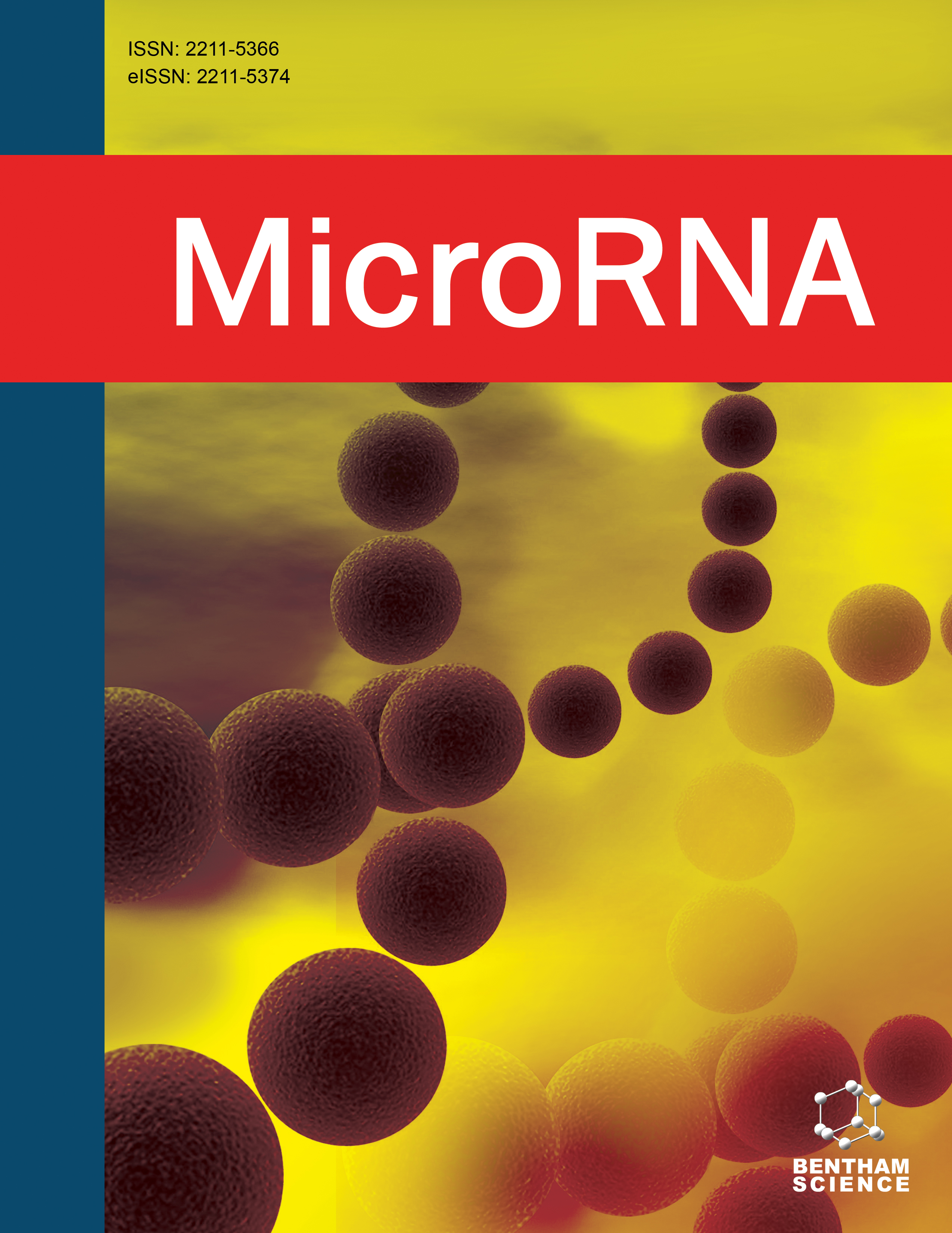- Home
- A-Z Publications
- MicroRNA
- Previous Issues
- Volume 13, Issue 2, 2024
MicroRNA - Volume 13, Issue 2, 2024
Volume 13, Issue 2, 2024
-
-
Non-Canonical Targets of MicroRNAs: Role in Transcriptional Regulation, Disease Pathogenesis and Potential for Therapeutic Targets
More LessAuthors: Aishwarya Ray, Abhisek Sarkar, Sounak Banerjee and Kaushik BiswasMicroRNAs are a class of regulatory, non-coding small ribonucleic acid (RNA) molecules found in eukaryotes. Dysregulated expression of microRNAs can lead to downregulation or upregulation of their target gene. In general, microRNAs bind with the Argonaute protein and its interacting partners to form a silencing complex. This silencing complex binds with fully or partial complementary sequences in the 3’-UTR of their cognate t Read More
-
-
-
Role of miRNAs in Brain Development
More LessNon-coding RNAs that are small in size, called microRNAs (miRNAs), exert a consequence in neutralizing gene activity after transcription. The nervous system is a massively expressed organ, and an expanding body of research reveals the vital functions that miRNAs play in the brain's growth and neural activity. The significant benefit of miRNAs on the development of the central nervous system is currently shown throu Read More
-
-
-
Urinary miRNAs: Technical Updates
More LessAuthors: Santhi Raveendran, Alia Al Massih, Muna Al Hashmi, Asma Saeed, Iman Al-Azwani, Rebecca Mathew and Sara TomeiDue to its non-invasive nature and easy accessibility, urine serves as a convenient biological fluid for research purposes. Furthermore, urine samples are uncomplicated to preserve and relatively inexpensive. MicroRNAs (miRNAs), small molecules that regulate gene expression post-transcriptionally, play vital roles in numerous cellular processes, including apoptosis, cell differentiation, development, and proliferation. Read More
-
-
-
The Expression of Hsa-Mir-1225-5p Limits the Aggressive Biological Behaviour of Luminal Breast Cancer Cell Lines
More LessAuthors: Y-Andrés Hernandez, Janeth Gonzalez, Reggie Garcia and Andrés Aristizabal-PachónIntroduction: Numerous genetic and biological processes have been linked to the function of microRNAs (miRNAs), which regulate gene expression by targeting messenger RNA (mRNA). It is commonly acknowledged that miRNAs play a role in the development of disease and the embryology of mammals. Method: To further understand its function in the oncogenic process, the expression of the miRNA profile in cancer has been i Read More
-
-
-
Characteristics of HIF-1α and HSP70 MRNA Expression, Level, and Interleukins in Experimental Chronic Generalized Periodontitis
More LessAuthors: Parkhomenko Daria, Belenichev Igor, Kuchkovskyi Oleh and Ryzhenko VictorObjectives: Periodontal diseases are a rather complex problem of modern dentistry and do not have only medical but also social significance. The objective of this study is to weigh the effect of a mixture of Thiotriazoline and L-arginine (1:4) on the parameters of the system of endogenous cytoprotection of blood and periodontal illness in rats with experimental chronic generalized periodontitis and substantiate further study Read More
-
-
-
Tumor Targeting via siRNA-COG3 to Suppress Tumor Progression in Mice and Inhibit Cancer Metastasis and Angiogenesis in Ovarian Cancer Cell Lines
More LessBackground: The COG complex is implicated in the tethering of retrograde intra-Golgi vesicles, which involves vesicular tethering and SNAREs. SNARE complexes mediate the invasion and metastasis of cancer cells through MMPs which activate growth factors for ECM fragments by binding to integrin receptors. Increasing MMPs is in line with YKL40 since YKL40 is linked to promoting angiogenesis through VEGF and can incre Read More
-
-
-
Prediction of LncRNA-protein Interactions Using Auto-Encoder, SE-ResNet Models and Transfer Learning
More LessAuthors: Jiang Huiwen and Song KaiBackground: Long non-coding RNA (lncRNA) plays a crucial role in various biological processes, and mutations or imbalances of lncRNAs can lead to several diseases, including cancer, Prader-Willi syndrome, autism, Alzheimer's disease, cartilage-hair hypoplasia, and hearing loss. Understanding lncRNA-protein interactions (LPIs) is vital for elucidating basic cellular processes, human diseases, viral replication, transcription, and pla Read More
-
Most Read This Month
Article
content/journals/mirna
Journal
10
5
false
en


